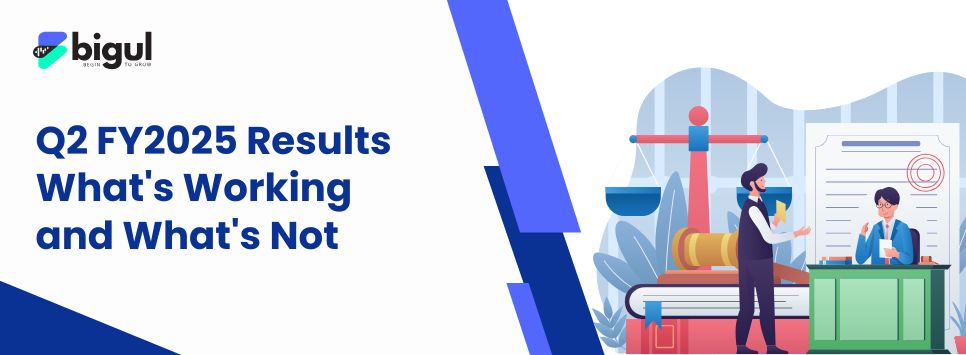The stock market beats with energy from the opening bell to the closing gong. Some investors treat it as a long-term marathon. Others chase the adrenaline rush of intraday trading. Picture this: a Mumbai trader stares at multiple screens, fingers dancing over the keyboard, making split-second decisions as prices flash before their eyes.
What makes them work hard? Those in Day Trading open and close their positions in a single trading day, using the day’s quick changes to make profits. It means that traders in this sector can earn a lot or lose a lot all within a single day. Since you are not investing, you ride the market’s swings daily.
The appeal hooks you immediately – you can make significant daily gains. But don't fool yourself. You need laser-sharp focus, disciplined execution, and deep knowledge to navigate this lightning-fast arena. You build this skill through knowledge, practice, and mastering specific intraday trading strategies.
How Intraday Trading Actually Works: The Mechanics of a Single Day
You need to understand how intraday trading works at its core. While investors buy shares because they believe in a company's future, intraday traders don't care about the business itself. They focus on one thing: price movement. They exploit volatility using leverage (borrowed capital from brokers), amplifying both potential profits and losses.
You execute trades based on technical analysis – reading charts, patterns, and indicators – much more than company fundamentals. The principle stays simple: Buy low, sell high (or sell high, buy low through short-selling), all within market hours. You always close positions before the market shuts down. This shields you from overnight risks like global events or earnings reports but demands your constant attention during the day.
Brokers offer specific intraday products like MIS (Margin Intraday Square-off) or Cover Orders that force this auto-closure. You calculate your profit or loss as the difference between entry and exit prices, multiplied by quantity traded, minus brokerage and charges.
Here's what catches many off guard: authorities treat intraday profits as business income, creating a significantly higher tax burden compared to long-term capital gains.
Also Read | Intraday vs Delivery Trading– Understand the Differences
Your Intraday Journey Begins Here: How to Learn Intraday Trading
How do you learn intraday trading effectively? Jumping in blindly guarantees losses. You start with education. Spend time understanding market mechanics, order types (market, limit, stop-loss), chart patterns (head and shoulders, triangles, flags), and basic technical indicators. You'll find numerous reputable online courses, webinars, and books designed specifically for intraday beginners.
Paper trading becomes your lifeline next. Most broker platforms offer simulated trading accounts where you trade with virtual money in real-market conditions. This creates your risk-free playground to test strategies, understand platform functions, and develop emotional control without losing real money.
Take it seriously – track your virtual trades, analyze wins and losses. Focus on mastering one or two simple strategies initially. Don't let complex systems overwhelm you. Meanwhile, build discipline and risk management habits. Decide before entering any trade how much you're willing to lose (your stop-loss) and follow it religiously.
Never risk more than 1-2% of your capital on a single trade. Learning intraday trading takes time; patience and continuous learning become your greatest allies.
Navigating the Market Waves: Essential Intraday Trading Strategies
You need robust strategies to succeed. These become your battle plans. Popular approaches include:
Breakout Trading: You identify key support or resistance levels. When price decisively breaks above resistance (you buy) or below support (you sell short) with increased volume, you jump in, expecting a significant move in the breakout direction.
Pullback Trading: After a strong trend move, prices often temporarily move against the trend. You wait for this pullback to find support (in an uptrend) or resistance (in a downtrend) and then enter in the original trend direction.
Range Trading: When a stock bounces between clear support and resistance levels without a strong trend, you buy near support and sell near resistance (or vice versa).
News-Based Trading: You capitalise on immediate price reactions to major announcements (earnings, economic data, sector news). This demands lightning-fast execution and carries high risk due to volatility.
No single strategy works every time. You need to find one or two that match your personality and risk tolerance, master them through practice (paper trading first!), and apply them consistently. Always combine your chosen strategies with strict risk management rules.
Tools of the Trade: Indicators and Timing Your Intraday Moves
Technical indicators serve as your compass in the intraday trading wilderness. While no single tool works magic, traders often debate the best indicator for intraday trading. Popular and effective choices include:
Moving Averages (MAs): Especially short-term ones like the 5, 9, or 20-period. They smooth price data to reveal trends. Crossovers (when a faster MA crosses above a slower MA) can signal entry/exit points.
Relative Strength Index (RSI): This measures momentum and identifies overbought (typically above 70) or oversold (typically below 30) conditions, potentially signalling reversals.
Stochastic Oscillator: Similar to RSI, it identifies overbought/oversold levels, often providing earlier signals but potentially more false positives.
Volume: Often overlooked but crucial. Increasing volume confirms the strength of a price move (breakout, trend continuation). Low volume moves raise red flags.
You also need to choose the best time frame for intraday trading. This depends on your strategy and personality:
1-minute/2-minute/5-minute charts: For scalpers seeking numerous small profits from tiny price movements. You need intense focus and quick decisions.
15-minute charts: A popular balance, offering more reliable signals than lower timeframes without requiring constant screen-watching.
30-minute/60-minute charts: Suitable for swing intraday trades, capturing larger moves within the day, requiring less frequent monitoring.
Most volatility and opportunity occur during the first hour (9:15 AM - 10:30 AM IST) as the market digests overnight news and finds direction, and the last hour (2:30 PM - 3:30 PM IST) as traders close positions. Traders consider these prime times for action.
Choosing Your Battlefield: Selecting the Best Stocks for Intraday
Not all stocks work equally well for intraday action. You need to select the right stocks carefully. Key characteristics include:
High Liquidity: Stocks with high average daily trading volume ensure you can enter and exit positions quickly at desired prices without significant slippage. Nifty 50 and Nifty Next 50 stocks provide prime examples (like Reliance, HDFC Bank, Infosys, ICICI Bank).
Volatility: You need price movement to profit. Stocks with higher Beta (measuring volatility relative to the market) tend to offer more intraday opportunities. However, higher volatility also means higher risk.
Strong Price Trends or Clear Ranges: Stocks showing consistent uptrends, downtrends, or well-defined sideways channels provide clearer signals for entry and exit based on your chosen strategy.
News Sensitivity: Stocks that react predictably to sector news or company announcements can offer targeted opportunities for news-based strategies.
Adequate Margin: Brokers offer different leverage levels for different stocks. Ensure your chosen stocks have sufficient margin availability for your capital.
Focus on a manageable watchlist (maybe 10-15 stocks) that meets these criteria. Trying to track too many dilutes your focus. Keep an eye on what they do, observe their usual ways of moving and get comfortable with their habits. Having this knowledge enables you to find recurring opportunities when trading in the short term.
The Tightrope Walk: Discipline, Risk, and the Path Forward
Mastering intraday trading requires continuous learning. It's exhilarating but dangerous. Beyond strategies and tools, your mindset determines everything. Treat it like a serious business. Define your daily loss limit and STOP trading if you hit it. Never trade revenge after a loss. Stick to your pre-defined plans. Understand the tax implications – consult a CA, as the authorities tax your profits fully as business income.
First, decide to trade only with paper money and stick to it until you make profits consistently, then switch to real money trading. Always keep in mind that protecting your capital is the top priority and profits will come from that. People who want to make money in intraday trading need to educate themselves, practice often, use good strategies, choose their stocks carefully, manage risks diligently and remain emotionally firm.
It's not easy, but for those willing to learn, adapt, and respect the market's power, the potential rewards can be significant. Are you ready to step onto the intraday tightrope?
Also Read | Intraday vs Positional Trading: Which One Should You Prefer









.jpg)
.jpg)
